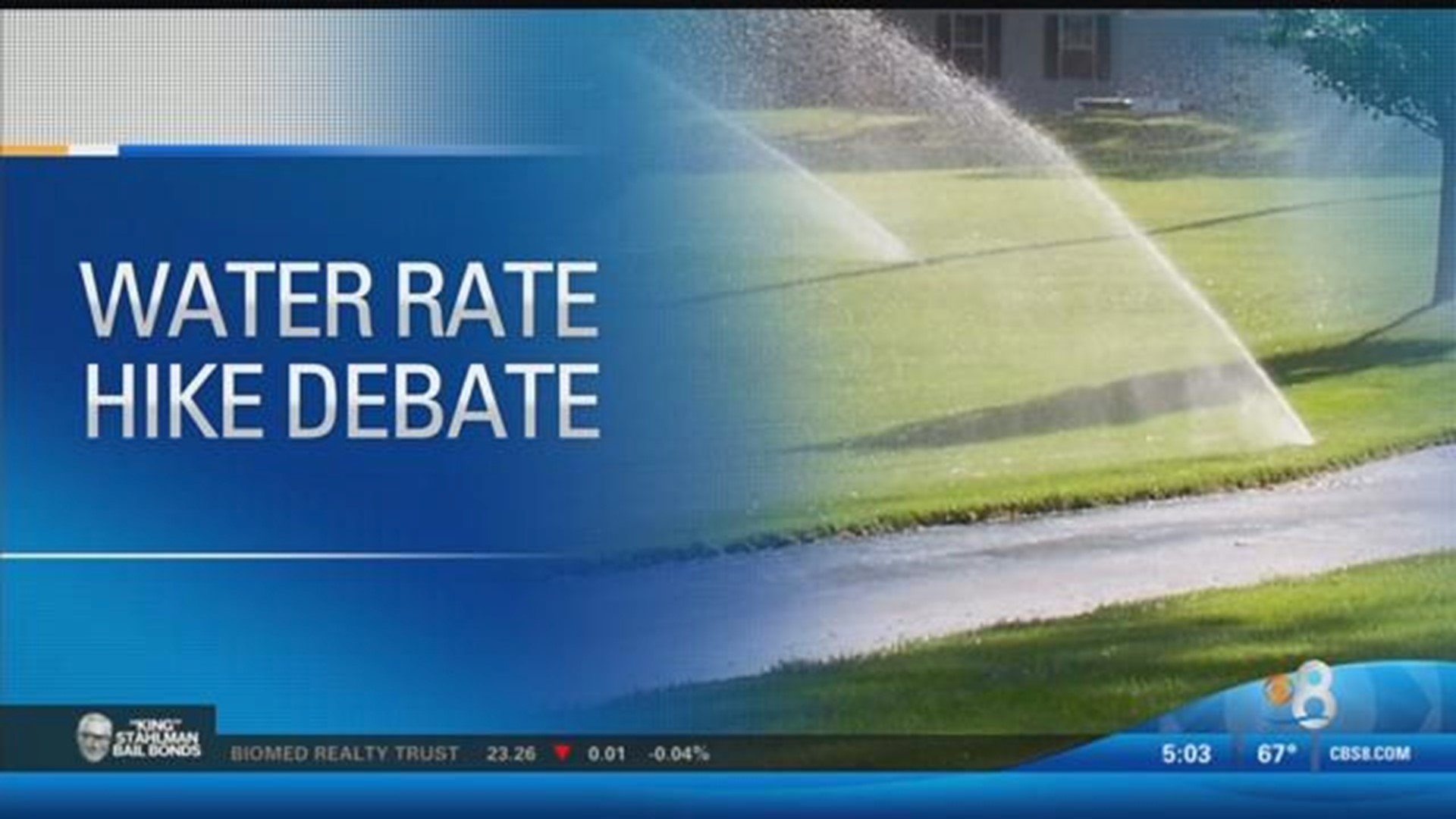SAN DIEGO (CBS 8/CNS) - Water rates in San Diego will rise over 16.7 percent next year under action taken Tuesday by the City Council.
The rate hike to customers starts at 9.8 percent beginning in January 2016, with an additional 6.4 percent increase coming July 1. The second increase is 0.5 percent less than originally proposed.
The amendment to bring rates down by 0.5 percent does not go into effect until 2017 with another 0.5 percent decrease in 2018.
Over the next four years, that is a 38.5 percent increase or $10.5 million reduction. The original increase over the next four years was 38.5 percent.
The hikes cover a combination of lower revenues as customers reduce consumption amid the drought, and higher expenses, according to city officials.
Halla Razak, the city's Public Utilities director, said the cost of imported water from the San Diego County Water Authority and Metropolitan Water District has gone from around $500 per acre-foot to $1,200 per acre-foot over the past decade. The new rates -- amounting to 1 cent per gallon -- will still be lower than the average of other local water agencies, she said.
Mayor Kevin Faulconer said the new funds will keep water reliable and safe, pay for replacement of aging pipes and invest in a system to recycle waste water into drinking water.
"Today's vote really is a critical vote for the future of our San Diego water supply," Faulconer said. "Simply put, today's vote is about infrastructure, and how we provide that infrastructure for our San Diego families and for our small businesses."
Supporters of the increases said failing to approve them would delay the projects, force the city to spend $2 billion to upgrade the Point Loma Wastewater Treatment plant, and require Public Utilities to spend down its reserve accounts -- which would catch the eyes of credit rating agencies, making capital projects costlier.
Councilman David Alvarez, one of two dissenters in a 7-2 vote, said he understood the need for some increases, but argued the rate structure doesn't make sense because it doesn't take into account reductions in water use by customers in the face of the drought.
"What are they getting in return -- what is this message sent to them, that even though they've done the right thing they're going to see an increase in their water rate?" Alvarez asked.
"That's true whether you consume a little bit of water, you conserve, you're attentive, you don't waste water, or whether you're wasteful and you use an excessive amount of water," Alvarez said. "No matter where you fall along that spectrum, today you're going to see the same water rate increase no matter where you are -- whether you save, or whether you waste."
The other dissenter, Councilman Scott Sherman, said the handling of conservation puts the rate structure in "a terrible, terrible spiral."
Razak said she'll bring further increases to the City Council over the next five years. The motion by Councilman Chris Cate to shave a half-percent off next July's increase would also reduce a planned July 2017 hike by 0.5 percent.
Council members Todd Gloria and Lorie Zapf also amended the staff recommendation by asking for a staff report on how the city could develop an assistance program for low-income customers, and veterans and seniors living on fixed incomes. The report, from Public Utilities and the city's Independent Budget Analyst's Office, will go before the council's Environment Committee early next year.
The action also includes higher rates for recycled water that is used for golf courses, landscaping and the like.
Representatives of the Otay Water District, which installed such a system in the 1990s and receives recycled water from San Diego, argued that their customers are going to be forced to subsidize the expansion of the so- called "purple pipes" into northern areas of the city.
Mary Salas, the mayor of Chula Vista, said South Bay residents will have to pay $7.2 million more under the proposal than the cost of service because they've already paid for their system.
Lightner said Otay officials didn't have a problem with the recycled water rate structure until the increases were proposed.
Numerous organizations backed the proposed hikes, including the San Diego Regional Chamber of Commerce, San Diego County Taxpayers Association and environmental groups interested in water recycling.
A residential customer whose monthly bill is now around $36 will see it rise to just over $39, according to a city report. Customers now paying $71 will see their bills go above $77. Customers now paying $71 would see their bills go above $77.

